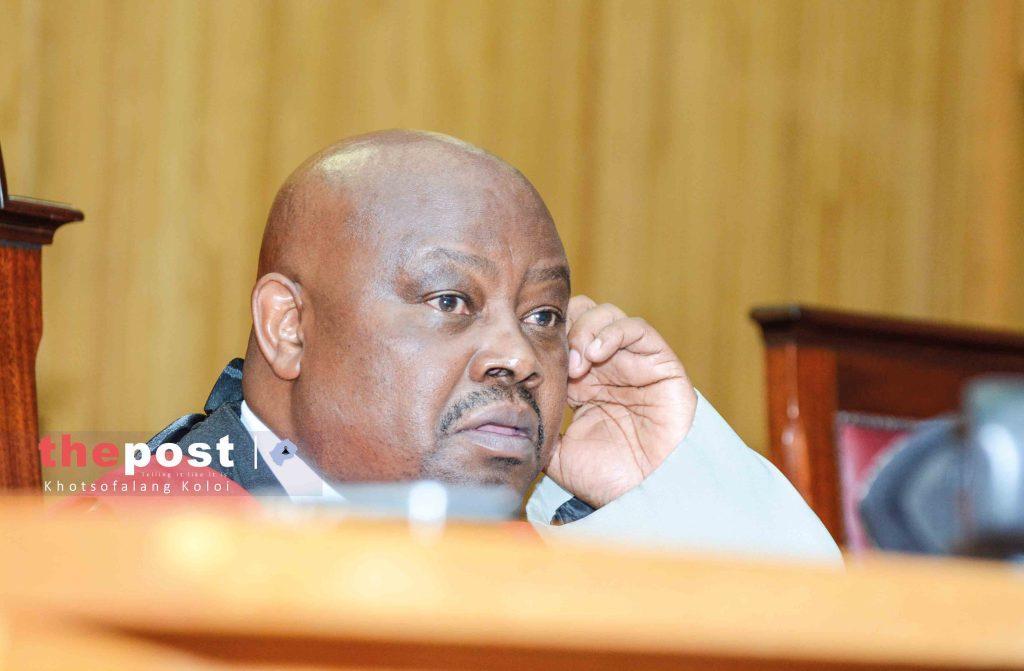Africa-Press – Lesotho. CHIEF Justice Sakoane Sakoane has lambasted lawyers who file bail petitions and then withdraw them when the crown informs court of their intention to oppose.
In a circular disseminated by Registrar ’Mathato Sekoai this week, Justice Sakoane said the lawyers’ motive is to get their clients released on bail through devious means. He said the dishonest practice is prevalent among defence lawyers.
The circular opens a window into why almost everyone, except those unlucky ones who fell victim to political machinations, are often released on bail irrespective of the kind of crimes they are charged with.
The circular has been distributed to the entire judiciary, the prosecution, the Law Society of Lesotho, the Commissioner of Police, the Commissioner of the Lesotho Correctional Service, the Directorate on Corruption and Economic Offences, and the Legal Aid.
“The withdrawals are not made instantly but some days pending the filing of opposing papers,” the circular reads. It says the withdrawals are not made in writing to the presiding judge who will be waiting for the filing of opposing papers and reply if any.
While the judge is still seized with the petition the petitioner approaches the remanding court for release under the Speedy Court Trials Act 2002, it reads.
“Unaware that the accused had applied for bail in the High Court but withdrew it in the face of opposition by the crown, the unsuspecting magistrate doing remands releases the accused.
The circular says the net result of this is that the accused who are not capable of being set free on bail in the Magistrate’s Court get released by that court contrary to the prescripts of the Criminal Procedure and Evidence Act 1981.
The Chief Justice says the purpose of bail law under the Criminal Procedure and Evidence Act 1981 “is to regulate the detention and release of the accused pending the commencement and completion of trials”.
“The CP&E also restricts release on bail in specified, serious offences if the accused does not prove exceptional circumstances,” he says.
Justice Sakoane says the purpose of release from remand in custody served by Speedy Court Trial Act 2022 is to regulate remand in custody where investigation stalls.
He says the Speedy Court Trial Act 2002 does not authorise derogation from the bail regime or take away the right of the crown to oppose the release of the accused whose detention on remand is more than 60 days by relying on the grounds put forward in the withdrawn petition.
He says in any event, even where the accused does retreat from the High Court and chooses to remain in detention on remand until the expiry of 60 days, “the crown should still be put on notice so that the crown can follow the accused to the remand court to ventilate reasons for opposing his release”.
To curb the abuse of release from custody by the remand court, Justice Sakoane has directed that all bail petitions should state the RCI number below the petition number on the front page of the petition.
“Next the name of the petitioner should state his/her identity number,” the circular reads. It adds that the charge sheet filed in the remand court should have the accused’s identity number written next to his name.
It says when the accused files a bail petition and withdraws before the High Court disposes of it, the crown must bring this to the attention of the Magistrate’s Court as the remand court.
The magistrate, Justice Sakoane says, should call for the petition if the accused disputes that he attempted to apply for bail but withdrew when he saw that the crown was about to oppose it.
For More News And Analysis About Lesotho Follow Africa-Press






